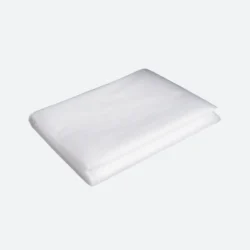-
Non Woven Dust Sheets
Non Woven Dust Sheets – 12′ x 9′
£12.60 – £189.03 Select options This product has multiple variants. The options may be chosen on the product page
The Ultimate Guide to Choosing Dust Sheets for Painting: A Shield for Your Project
Contemplating a painting project? Dust sheets for painting are an absolute necessity, forming the first line of defense against unwanted paint splatters, dust bunnies, and debris. But with a variety of materials, sizes, and reusability factors to consider, choosing the right dust sheet can feel overwhelming. Fear not, intrepid painter! This ultimate guide will equip you with the knowledge to select the perfect dust sheet for your project, ensuring a smooth, stress-free painting experience.
Material Matters: Understanding Dust Sheet Fabrics
The first step is understanding the different materials used in dust sheets for painting. Here’s a breakdown of the most common ones:
Plastic (Polyethylene): Affordable and lightweight, plastic dust sheets are ideal for short-term projects or protecting floors. They offer basic dust and water protection but can tear easily and might not be breathable, potentially trapping moisture underneath.
Canvas: Offering superior durability compared to plastic, canvas dust sheets are reusable and perfect for multiple projects. They’re more breathable, allowing for better airflow, and can be washed for future use. However, they can be heavier and more expensive than plastic options.
Drop Cloth Canvas: A thicker and more absorbent variant of canvas dust sheets, drop cloths are ideal for catching drips and spills. Perfect for protecting floors from spills and splatters, they are particularly useful when using oil-based paints.
Sizing Up the Situation: Choosing the Right Dust Sheet Dimensions
Next, consider the size of your project. Dust sheets for painting come in a wide range of dimensions, so it’s crucial to choose one that adequately covers the area you’ll be working on. Here’s a general guideline:
Small Projects (Furniture, Trim): Look for dust sheets measuring 3′ x 6′ or 4′ x 8′. These are perfect for covering furniture pieces, doors, or windows during painting.
Medium Projects (Single Room): Dust sheets measuring 9′ x 12′ or 12′ x 15′ offer ample coverage for a single room.
Large Projects (Multiple Rooms, Entire House): For extensive projects, consider dust sheets in sizes like 15′ x 20′ or 18′ x 25′.
Reusable vs. Disposable: Weighing Your Options
The reusability factor of dust sheets for painting is another crucial consideration. Here’s a breakdown of the pros and cons of each option:
Reusable: Eco-friendly and cost-effective in the long run, reusable dust sheets are often made of canvas. They can be washed and stored for future use. However, they require initial investment and cleaning efforts.
Disposable: Affordable and convenient for one-time projects, disposable dust sheets are typically made of plastic. They offer basic protection but contribute to landfill waste.
Beyond the Basics: Additional Features to Consider
While material, size, and reusability are the core factors, some additional features can enhance your experience:
Drop Pockets: Dust sheets with sewn-in pockets for furniture legs offer a more secure fit and prevent the sheet from slipping off.
Washable/Waterproof Options: For projects involving water-based or oil-based paints, consider dust sheets specifically designed for washing or offering waterproof protection.
Choosing the Perfect Match: Putting it All Together
Now that you’re armed with this knowledge, choosing the best dust sheets for painting becomes a breeze! Consider the project scale, material preference (durability vs. affordability), reusability needs, and any desired features like drop pockets or waterproofing.
By following these guidelines, you’ll transform your dust sheet selection from a daunting task to a confident stride towards a successful and mess-free painting project!




